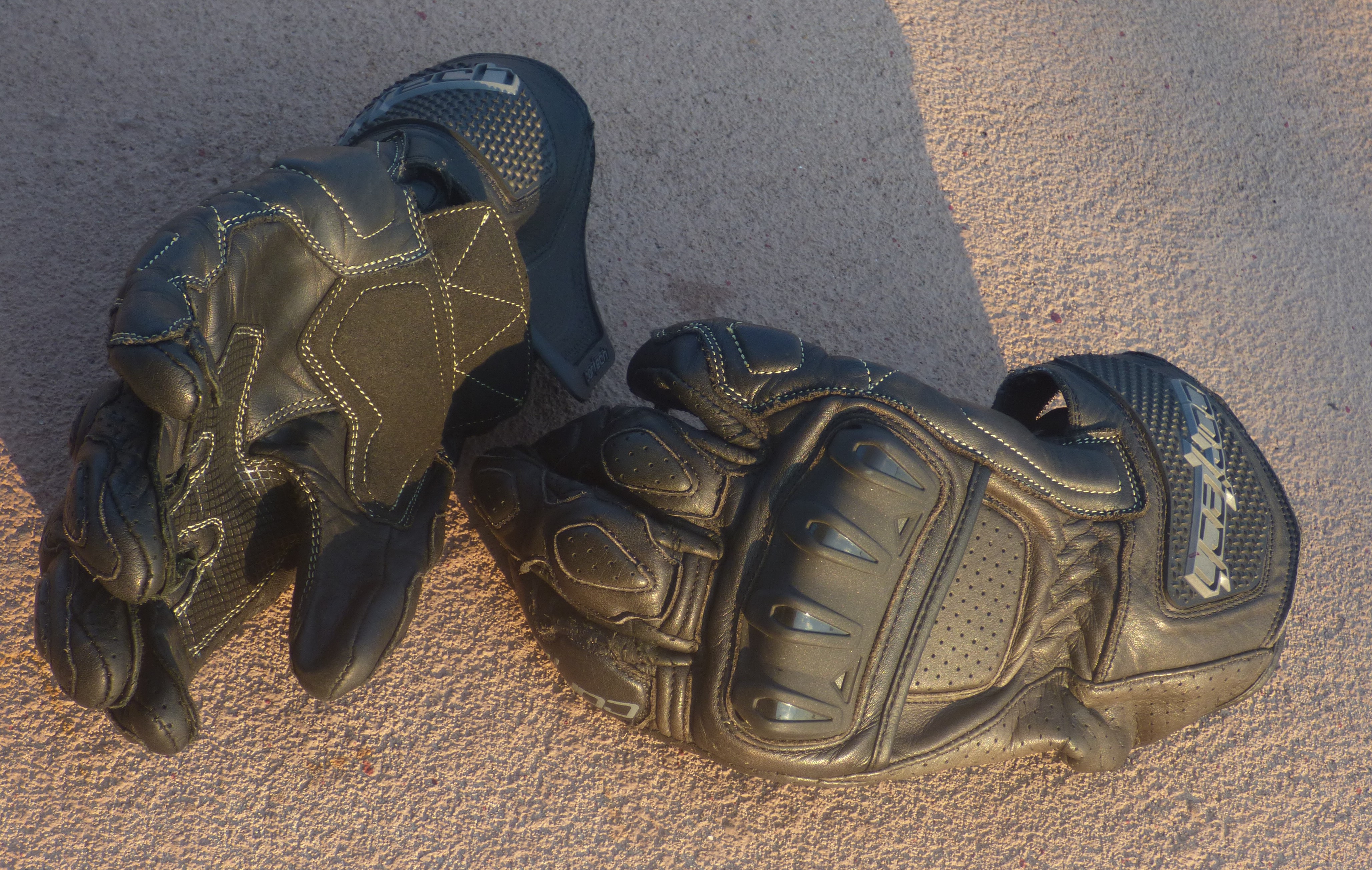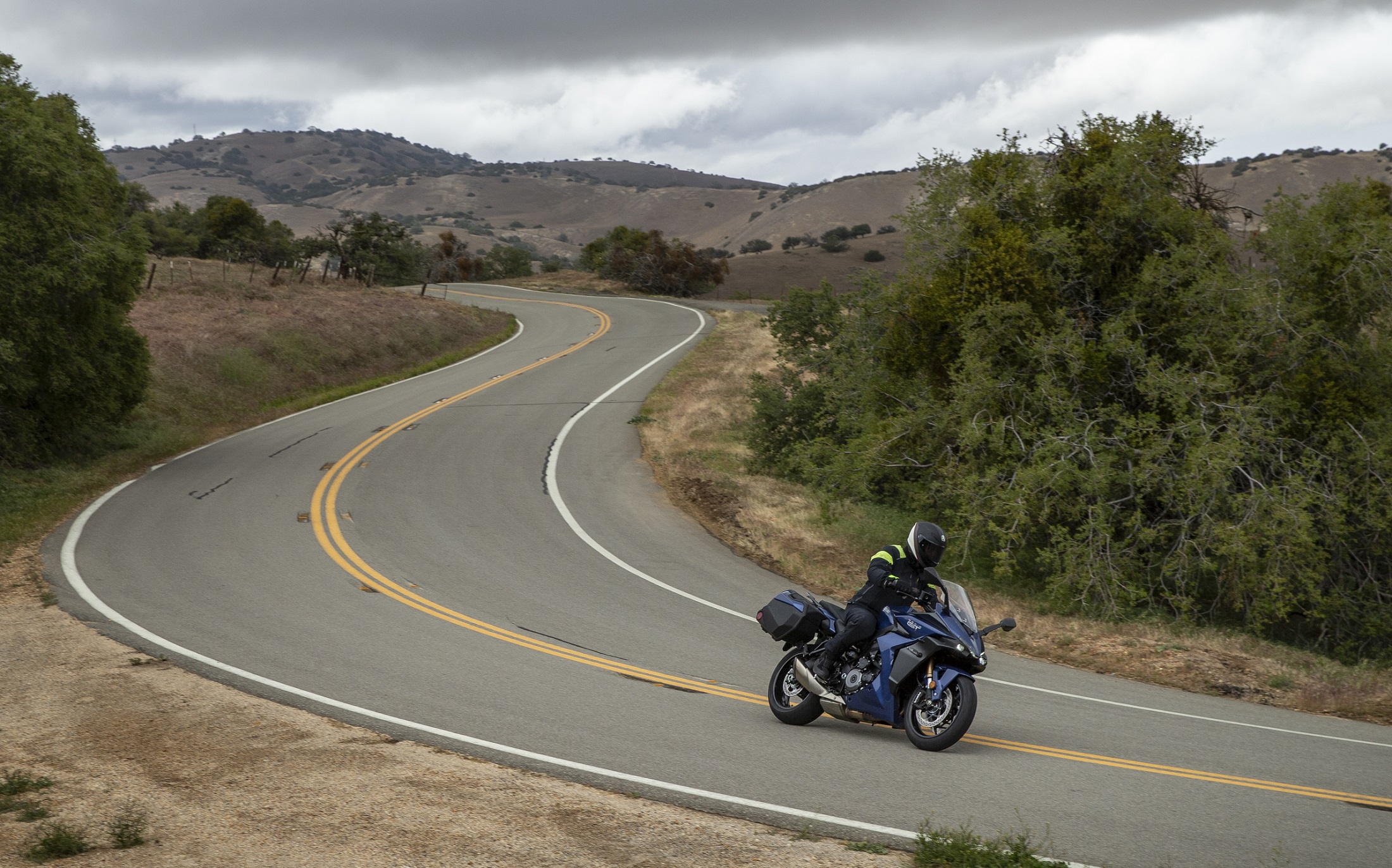This time of year, a lot of us are about to set off on a summer motorcycle trip. When you’re packing your gear, some things are obvious, from your basic tool kit, riding gear and clothes, plus camping gear if you’re planning to sleep under the stars. But there are some other things you might forget, or you might decide not to think about because you hope you don’t need them. Everybody’s list is a little different, but here are five things that are easily forgotten but essential, in my opinion, when I set out on a multi-day motorcycle ride.

Be prepared for your next motorcycle trip by making sure you have these essential but easily overlooked items. Photo by Brian J. Nelson.
The means for dealing with a flat tire
Some riders just hope they don’t have a flat, and others figure a roadside assistance plan and a cell phone, backed by a credit card, is a solution. But roadside assistance only gets you towed to a shop, and if your flat tire happens on Sunday afternoon and the shop doesn’t reopen until Tuesday morning, that can blow a big hole in your travel schedule. And your fun.
I’m not speaking theoretically. Years ago, I was on a trip, 350 miles from home and 40 miles from my destination for the weekend, at about 7 p.m. on a Friday night, when the bike’s handling suddenly started getting squirrelly. I pulled over and found that the rear tire was down to 22 psi. A closer examination revealed a nail in the tread. I could have called roadside assistance, but that would have just gotten me to a closed motorcycle shop.
That’s why I always recommend carrying a flat tire repair kit and knowing how to use it. Tubeless tires can usually be plugged as a temporary repair to get you to a more convenient location for a permanent fix. If you have tube-type tires, it’s more complicated, because you’ll also need to have the means to raise the bike and remove the wheel and tire. Carrying both a patch kit and spare inner tubes gives you double insurance.
In either case, don’t overlook a method for inflating the tires. Compressed CO2 cartridges save space, though you may need several. Other options are a small foot-powered pump or an electric one that attaches to your battery.
In my Friday night scenario, I was able to plug the tire under a street light in a parking lot, make it to my destination, and ride the motorcycle to a shop the next day to get the tire replaced, which was a lot less inconvenient than being stuck.
Spare key
Consider this traveler’s nightmare scene: You walk out to your motorcycle parked along the street, pull your key out of your pocket, feel it slip from your fingers and watch as it skitters on the asphalt and disappears down a storm sewer drain. Once again, roadside assistance may be able to save you, but you also may waste half a day of your precious vacation time. Wouldn’t it be better to pull your spare key out of a pocket and be on your way?
I either zip-tie a spare key somewhere in the bike’s bodywork where it’s out of sight but accessible or carry a spare in an interior jacket pocket. Keep in mind that if you have a key with a security chip, it’s better to keep in on yourself rather than attached to the bike, where it will essentially permanently disable the security feature. I’m usually good about not losing things, so having a spare has only saved me once. I still have no idea how I lost my key in Kentucky that time, but my extra key meant it was a momentary “Huh,” instead of a day-long hassle.
Basic first aid supplies
You have tools for bike and a plug kit for the tires. What about the necessities for your body?
Of course you’ll need to remember any prescription medications you take, but if you also rely on prescription eyeglasses to ride safely, better carry an old pair as a spare. Beyond that, it doesn’t take much packing space to bring along an over-the-counter pain medication for sore muscles at the end of a long day of riding, and a few bandages and some antibiotic. I’ve been stung by bees and wasps a few times, and people who are affected by stings need to carry a treatment. My gear protects me from sunburn, but I can still get a red nose through my helmet’s faceshield, so a travel-size tube of sunscreen is wise. For some people, eye drops are essential on a hot, dry day.
Being attentive to your body goes beyond medications. You can get dehydrated in both hot weather and in the cold, and if you’re the type who gets sleepy, cranky or distracted when the blood sugar drops, having snacks along may be important. Rider, know thyself.

I’m not a gear hound, but I usually have at least half a dozen different pairs of gloves at any time to cover all possible riding conditions. Photo by Lance Oliver.
Remember to take that one thing you just have to have
This one will be different for every individual, but I think all of us have one or two things that we have to have to be comfortable. Two things make my list, so I make sure not only to have them, but also spares.
First up: earplugs. I always wear them and they’re especially important on long rides. They not only protect my hearing (despite wearing earplugs every time I ride, I still have some tinnitus at my advanced age from all those years and miles in the saddle), but they also keep me from getting as tired. A long day of wind noise literally wears me out, so I make sure I have spares on hand in case the ones I’m wearing get old.
Second: gloves. I’m surprised how many riders don’t wear gloves. For me, they rank second in importance after my helmet in safety terms, but on a long trip they’re also important for comfort. I’m not really a gear hound, but I am kind of picky about gloves and I always have at least two pairs of gloves with me on multi-day trips and if I’m likely to face wider range of temperatures and weather conditions I’ll probably carry three. Happy and comfortable hands make for better control over the motorcycle, and that can mean everything.

The right attitude is the most important thing to pack for a multi-day motorcycle trip. Photo by Kevin Wing.
The traveler’s attitude
The one thing that may be most important in determining the success of your motorcycle journey is not a piece of gear, but a mindset. I call it the traveler’s attitude, and it applies to any kind of travel, not just on two wheels. .
The traveler’s attitude means looking at the “Road Closed” sign and thinking, “Great, this means I’m going to see new roads I never expected to see” instead of letting it sour your mood and ruin your day. The traveler’s attitude means realizing that the best stories are not the ones about trips where everything went smoothly according to plan, but the ones where you found satisfaction in your ability to handle unexpected obstacles. The traveler’s attitude encourages you to follow a whim and make a detour to see the world’s largest rocking chair or to choose a longer route to your destination just because it looks more interesting as you sit at that fork in the road.
You can make it easier to keep this attitude by intentionally leaving some slack in your schedule. For those of us who have a general itinerary and let the details be determined by the weather, our mood, and the sights we encounter on the way, it’s easier. It’s more challenging for the OCD rider who only feels comfortable with every day’s sites and hotel reservations planned in advance. But if you plan your itinerary with some extra time scheduled in, you won’t be so stressed when weather delays your ride or you just wish you had more time to linger at an attraction that’s more interesting than you expected.
All five of these things are easy to overlook, but if you make sure you pack them for your next trip — especially your traveler’s attitude — you’ll be more likely to enjoy your time on the road.
